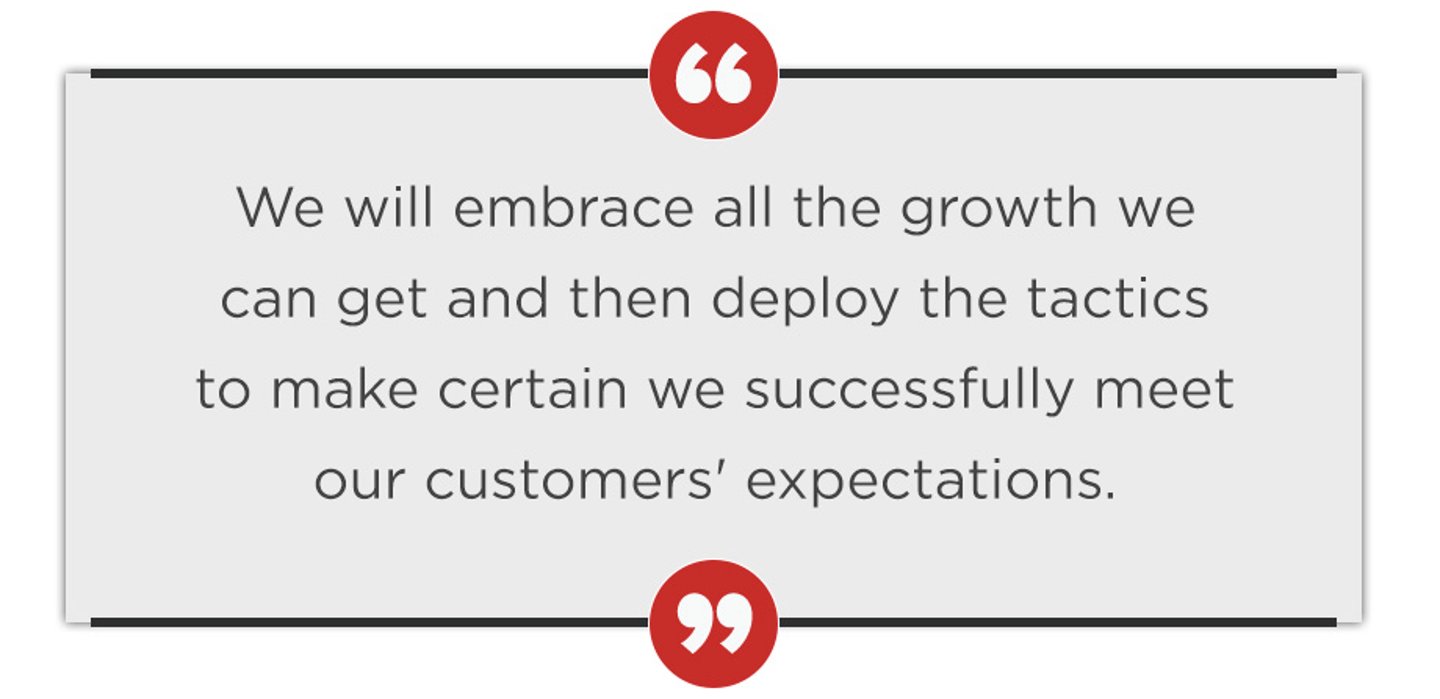'We Are Wiser from What We’ve Been Through': Up Close with Newell Brands’ Steve Sigrist
As VP of customer service at Newell Brands, a company he’s been with for nearly two decades, Steve Sigrist has deep experience in making sure things are running smoothly for the consumer goods’ company’s customers.
He’s held a range of roles at the company, including in sales operation and supply chain, and spends much of his time “keeping his ear to the ground” to stay aware of potential game-changing opportunities for both Newell and its customers.
We caught up with the CGT/RIS Executive Council member to learn more about how Newell is navigating the latest stage of the pandemic, as well what changes he sees sticking around once we’re past it.
CGT: You joined one of our panels during the first few weeks of the pandemic and noted: “You win or lose every single day in this tough, challenging environment right now by your ability to execute. … We have to be authentic with [our customers] on what we can pull off and what we can’t.” Has that viewpoint changed at all since then? Strengthened/weakened?
That view strengthens as we further develop order execution capabilities. Securing visibility to operating components deep into our entire manufacturing, procurement, distribution, transportation and customer’s networks is a critical enabler to achieving 100% on-time and 100% complete performance.
As the data insights continue to mature and as mechanisms for sharing information are enhanced, we would be considered inattentive to the customer’s needs if we did not provide that info in a timely manner.
EC Member Shares
How long have you been with Newell Brands?
19 years
What has been your “pandemic pastime?”
Organization around the house. Everything is in its place.
Where are you looking forward to traveling once it becomes safe to do so?
Mom and Dad’s House
Favorite Netflix/Amazon/Hulu binge series?
Ted Lasso on Apple TV
What book is on your nightstand or to-do list?
Atomic Habits by James Clear
CGT: Likewise, you noted scenario planning as a growing area of interest. How have the last nine months influenced your view on its role and use for success?
We are wiser from what we’ve been through. We can leverage that experience base and become agile and creative in our approaches.
As with all organizations, many different situations have been thrown at us since the pandemic, and the quality of our decisions and response plans has determined the outcomes. Through careful examination and reflection, we’ve learned what works and where we can get better next time.
CGT: Obviously we all want to get back to normal, but the pandemic has accelerated many business and consumer changes that were a long time in the making. What are some of the operational changes that you hope will stick once the health crisis is behind us?
The emphasis on recognizing the ongoing extraordinary significance of the front-line workers. All other efforts in the organization will have no traction at all if your people are not safe at the points of where you make product and ship product.
CGT: When it comes to CG and retail collaboration, what kind of work needs to be done on both sides of the aisle? There’s been lots of discussion that the pandemic would drive this — has this come to fruition in your experience?
I continue to see developing gains in the collaborative planning space, and the pandemic impact often made the dialog absolutely necessary. To get it moving further forward, both sides should continue to be as transparent as possible about challenges, improvement opportunities, and where best practices are taking place across the industry.
For the retailer, getting the process off the ground can be quite simple. Approach your known supply base (or potential supply base) and ask “what ideas do you have.” Retailers may then evaluate the supplier responses, some will be thoughtful and others will be less prepared, to determine which suppliers have the capacity to accelerate the results of enhanced collaboration.
CGT: What’s still serving as a roadblock to this collaboration, and what are some of the biggest misconceptions about achieving retail/CG collaboration?
In many cases, you simply have to be a top supplier in a category in order to secure an ongoing collaboration schedule. We are fortunate at Newell Brands because we hold No. 1 or No. 2 share in almost all of our categories. This results with us getting a welcome reception when we find an opportunity for enhanced collaboration or for when retail partners have initiatives where they seek manufacturer engagement.
However, we recognize that all of our customers are all pressed for time (like everyone else) and their priorities may not be immediately aligned to the areas we see as pressing. As such, I always suggest an approach that follows the truism of “seek first to understand, then to be understood.”
CGT: Many CGs are practicing SKU rationalization, including Newell, in order to better navigate the pandemic. Can you share perspective on its benefits and how it might influence strategies moving forward?
It remains a task that is just so valuable to our consumers, trade customers and for our company’s execution. By prioritizing the top items and rationalizing what SKUs are really providing value, we ultimately ensure better execution and availability of the products that matter most.
Of course, the SKU reduction efforts result in many other mutual improvement opportunities with our retailers, including inventory reduction, simplified planning, reduced demand of support requirement, etc. The benefits from simplicity are enormous.
CGT: Your online sales grew 40% last quarter and year to date. From an operations standpoint, managing that type of growth must be a challenge. What can share about how you’re able to do so successfully?
We are grateful for all business growth as it materializes in any channel — online sales momentum is strong and with our vast product offering, we’ve got a lot more opportunities. Additionally, for execution, because we have the scale of a $10 billion organization, we can simply apply existing resources and quickly ramp up any investments required to support incremental growth.
It’s part of our culture and innovation mindset — we will embrace all the growth we can get and then deploy the tactics to make certain we successfully meet our customers' expectations.
CGT: Likewise, when it comes to leveraging data to better meet your customers' expectations, which insights are proving to be the most valuable right now?
In my particular role in customer service and order management, I anchor the data needs around order flow visibility. It’s critical for our team to know the customer’s expectation on timing and how we are performing. This involves tracking the order at every stage and keeping an eye on potential supply chain obstacles.
Our value from Salesforce and the functionality it provides on customer activity and service experience continues to grow — I’ll build on that platform further in 2021.
I’ll also note that I view data management and insight as table stakes to creating value. Subsequently, our work in this space is just a continuous flow of enhanced business processes that should continue to make us perform better.
CGT: “Resiliency" is starting to evolve into buzzword territory, and it can mean different things to different companies. What does it mean from your business perspective, and what’s most important for companies to achieve and maintain it?
To me, in the most simplest terms, it means doing what you’ve promised your customers you’ll do. Often the “ante” to building a great relationship with trade customers is simply having goods available to meet the needs of our retailer’s consumers. If we miss there, it can be a tough recovery sometimes.
Resiliency, buzzword or not, in my mind is having the capability to anticipate variability and having effective real-world practices in place to still meet the customer’s needs during challenging circumstances.






